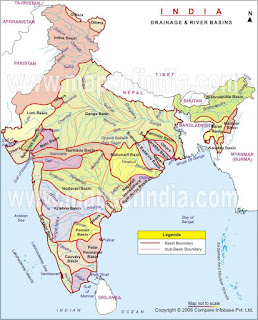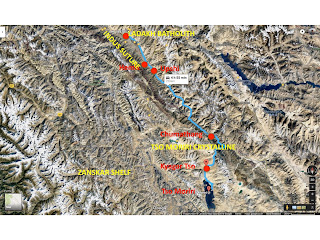Before going any further into this article please close your eyes for a moment and remember the happiest memory of your life. May be your first kiss… the first day you hold your child… the gift you gave your parents from your first salary … just remember.
What if I tell you that all those memories are fake. What if I tell you that they have been implanted in your brain and have never taken place? What if I tell you that those memories belong to someone else? What will happen to you, to your identity? What if all your memories are wiped out. Will there still be a ‘you’? Ever since human beings gained consciousness they have asked a basic but profound question, ‘Who am I?’. After thousands of years of progress, are we any closer to answering that primitive question?
There is a big debate between the religious and scientific community about weather we are the soul or the body? Some say we are the soul that is eternal and it changes the body like we change cloths. Others say that the body is all that there is. We are born with the body and die with it. What about a third alternative? We are neither as permanent as the soul, nor as temporary as the body. What if I tell you that we are just memories.
Emotions creates impacts, impacts creates memories, and memories creates consciousness. Events that trigger emotions, like love, passion, fear, anger etc., leaves behind an impact that the brain thinks as important and stores as memories. It is those memories that makes us who we are.
Some say, ‘You are what you think’. The truth is, ‘You are what you remember’. Your idea of yourself, the ego that you have about yourself, your identity, all exists in memories. If I erase those, they do not exist anymore. Your religion would mean nothing to you. Your nation would mean nothing to you. You will understand no language. Even your family would mean nothing to you. In fact there would be no ‘you’. You must be thinking that playing with memories is science fiction. What if I tell you they are more real that you think.
We are lucky to be living in an era where science is breaking new grounds. Experiments have brought out unbelievable facts. Unfortunately, they do not make news. We are fed with the news of poverty in Africa, with the killings by ISIS, or with court’s judgement of whether Homo sapiens living inside an artificial boundary that matter to just one of the 9 million species, should stand when some acquistic vibrations happen in one of the infinite possible patterns created by one of over 100 billion members that ever existed of that particular species! They do not tell you about scientists like Ramirez and Liu who are removing fiction from science fiction.
The white rat in the picture is the hero of the experiment. A tragic hero if I may call it so. The wire that goes down its head is a switch to trigger a memory on or off. The white little hero had memories of the blue box. Then it was put into the red box and given mild shocks while the memory of the blue box was triggered. A trick was played with its memory. The poor guy now believes that it got the shocks when it was in the blue box. So, whenever it was put in the blue box it froze with fear. Bingo! Inception!
Scientists have managed to store rat memory in artificial memory chips that mimics brains own memory signal. They have used memories of trained rats and implanted them into untrained rats, who then became trained without any training. Scientists have even transformed shocking memories into cheerful ones. Think about the implications that it can have. One must not forget that the brain of a mouse and that of human beings are totally different. Human mind is much more complex. But, limitations are now just technological. Possibilities are endless!
We have blood banks, sperm banks, gene banks…what about memory banks? A place where you can periodically back-up your memories. Incase you suffer from Alzheimer’s when you are old, you can get all your memory back. What about erasing traumas? What about education? Just like training untrained rats by replacing memories, what if we can turn unskilled labours into skilled labour? But storing and implanting memories have much bigger implications. It shatters the very idea about our existence.
What if my memory is stored and preserved even after I die. Then it is implanted into someone who have lost all his memories. Think about it for a bit. Let the idea sink. That person whom I have never met has my memories. He ‘remembers’ just what I remembered and thus becomes me. The body changes, but I continue to exist. I start again from the day I last backed up my memory! What if my memory is copied into more than one person? Remember Agent Smith of Matrix. There will be more than one me, with a shared past but different futures. 'Should we store memories?' then becomes an ethical question.
There would be a time when our planet will die. If not by nuclear weapons then by asteroids, if not by explosion of Yellowstone then by the sun burning all it’s fuel. If we want to outlive our planet, we need to find a new one. The nearest known liveable planet will take us over thousands of years to reach. Only way to survive the journey is to store the memory and put it back into the body after reaching there. That is one reason scientists are trying to find ways to store memory. The question of storing memories is not about ethics, it is about survival.
Machines are slowly replacing parts of human body. They are better and efficient. Artificial limbs implanted in people who have lost them in an accident are stronger and faster. We are even creating artificial organs that lasts longer. How far is it before we create the entire robotic body and implant the memory of a living person into it? Where is the next stage of our evolution taking us? This post is not meant to answer the questions. It is to trigger the questions that makes us think we we really are.
 |
| http://medicalxpress.com/ |
If we are, but our memories, how solid is that memories? What are memories after all? They are just electrochemical signals that are QC’ed by our hippocampus and stored in a very complex way in our brain. The picture you see above is a cross-section of a positive memory. Only bits and pieces of your life that had created an impact are stored as memories, while most of it is rejected by the hippocampus. Rest are just brain’s interpolation. In fact, brain plays a trick with you. Your brain manipulates and recreates your memories. Many of them are actually false. But to you it is truth because thats what you ‘remember’. I am afraid, our consciousness, our idea about ourselves, is not standing on a strong ground.
Memories are fragile… memories are manipulated. As R. Lanza says, the feeling of ‘I’ is just a 20-watt fountain of energy operating in the brain. So much for our big inflated ego!































































































